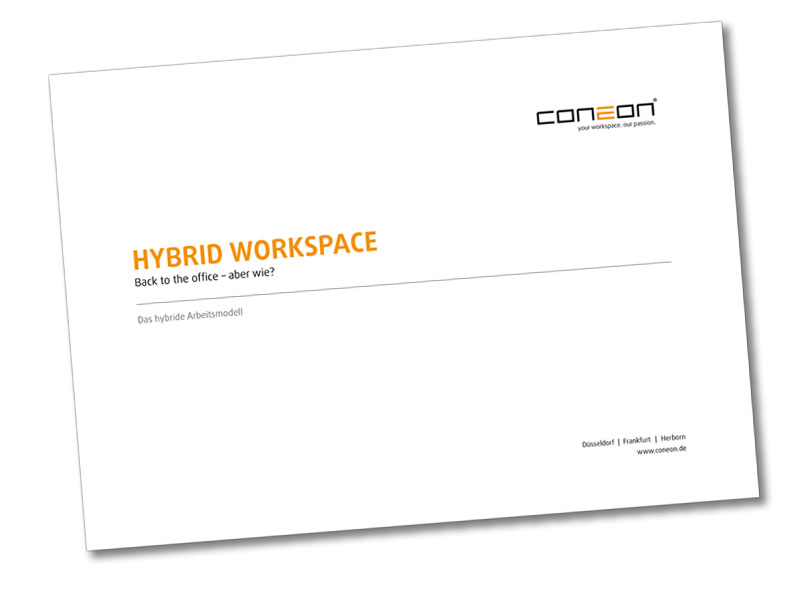Hybrid working - A bridge between home office and office
Back to the Office - but how?
Home office has become increasingly popular in the past. Many employees often no longer want to return to the office due to the high flexibility and other advantages of the home office. Video conferencing and online meetings have long been established and it is impossible to imagine everyday working life without them. However, the advantages of an office should not be ignored, because team spirit, integrity and open communication are often better implemented in a shared office. Many companies would therefore like to offer a new home office arrangement that takes all interests into account. The concept of "hybrid working" combines working in the office with the idea of a home office in an ideal way.
Click here for our Hybrid Workspace Guide

What does hybrid work mean?
The word "hybrid" comes from Latin and means "of two origins". It is also translated as "hybrid" or "crossover. Previously used mainly for car engines, the word is now making its rounds in the office world. A hybrid work model refers to a concept for companies in which employees can work from home as well as in the office. The employer specifies how many days an employee must come into the office. During the other days, the employee can flexibly choose whether to work in the home office.
What does a hybrid working model look like for companies?
Making a part-part arrangement, i.e. working "hybrid", is a good solution for many companies to offer their employees a lot of flexibility. However, a hybrid work space must be very well thought out. The following questions will help you prepare:
- How do I convince employees to come back to the office?
- How many employees will come back to the office, when and how often?
- Will my employees embrace desksharing?
- What happens to the many vacant workstations?
- Can I perhaps reduce office space in the future and save on rental costs?
- How can I implement sensible workplace management so that the space is also effectively utilized?
- How can I prevent workstation booking conflicts?
- More meeting spaces with good media technology are needed: How can I turn offices into meeting spaces?
We answer these questions and more in our "Hybrid Workspace" guide.
Work from home or office?
Why should I go back to the office? What do I get out of working in the office or home office? Will there still be a home office? In terms of performance and working atmosphere, working in the office has its advantages and disadvantages, just like the home office.
If you combine the advantages of working in an office and working in a home office, you gain a new space. In connection with this, each area acquires a completely new role and new hybrid working advantages.
At home:
Advantages
- Focused work
- Independence
- Time for further education
- Work on trust
- No interfering intermediate communication
In the office:
New role
- Collaboration
- Innovation
- Communication & Community
- Corporate culture & brand reinforcement
- Quick decisions
- Ergonomics
- Rapid development


The hybrid work model - What you need for it
A "hybrid office" should save space and costs, offer maximum flexibility and enable comfortable working. To successfully implement a hybrid remote working model in the company, the following measures are required:

1. Space optimization
For example, if your employees are to work only 2 days in the office in the future, a new occupancy rate must be calculated. How many workstations will be needed in the future? How many meeting rooms? The aim of the space calculation is to calculate the required number of square meters for your company.
2. Flexible office concept
When focused work is largely done from home, the activities of employees in the office also change. In most cases, more meeting rooms, creative spaces and project workstations are needed. Workstations also need to be more flexible and bookable. Modular furniture and walls make it possible to convert rooms as needed.
3. Booking software
With a hybrid office, there's no getting around the issues of desk sharing and workspace management. To ensure that booking workstations and meeting rooms doesn't end in chaos, you need flexible booking software that is tailored precisely to your company. We will show you a software that can also be controlled via app and has numerous functions.
You want more information?
Are you interested in the topic of "hybrid working" and would like to learn more about it? Then take a look at our new Hybrid Workspace Guide now!


